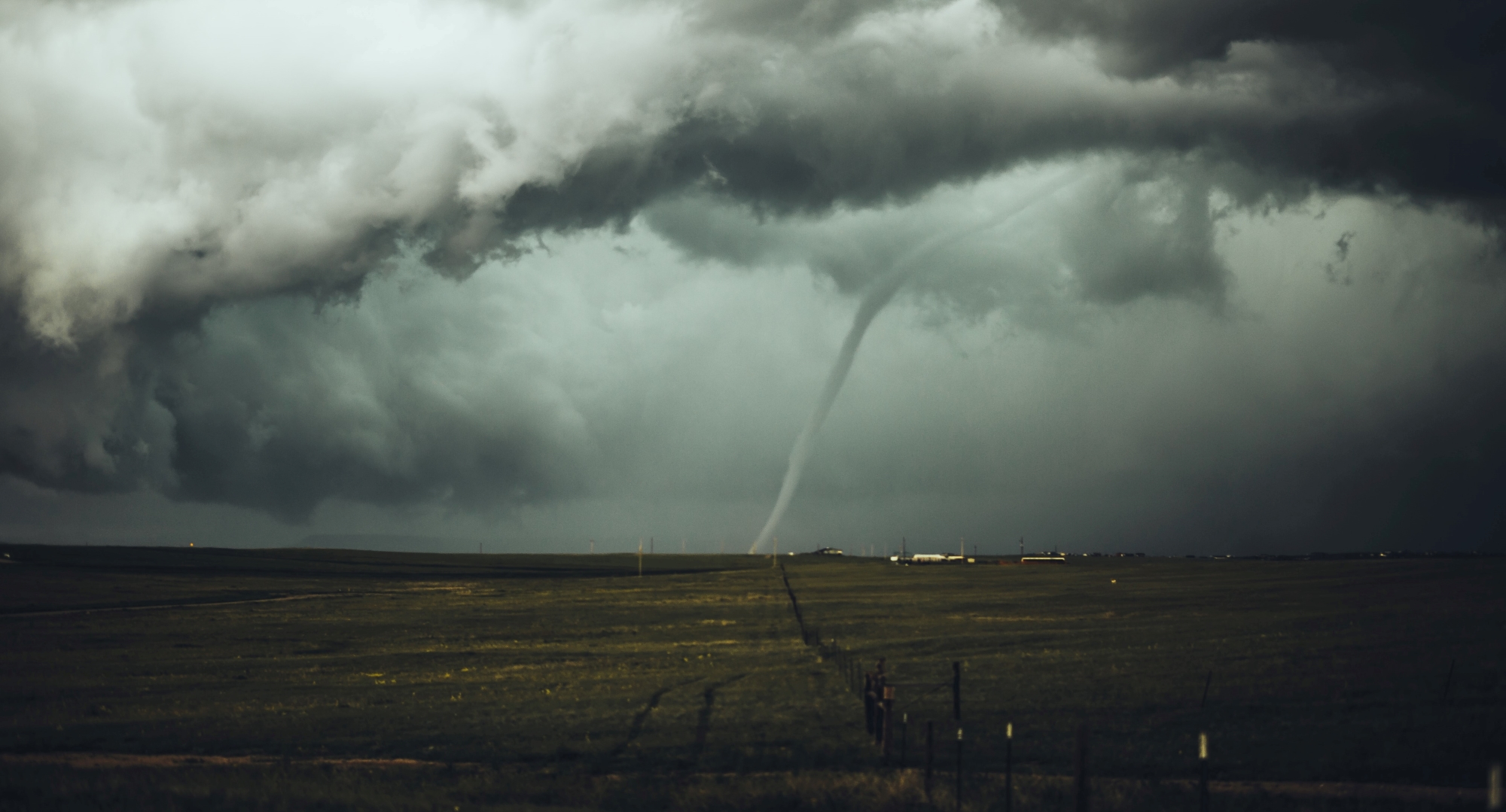Watch the Two Minute Science – The Trouble with Tornadoes video.
BUILD a tornado bottle
Materials: Two transparent 1-liter bottles (the kind used for club soda or seltzer work well)
DIY method: Parent help, drill with a ½” drill bit, painter’s caulk, and duct tape.
Non-DIY method: Parents can order a “tornado bottle connector” online.
Instructions: Empty the 1-liter bottles, rinse them, and fill one of them about ¾ full.
DIY method: Take both bottle caps and drill holes in the center of each cap, making sure the holes line up. Put the caps together, top to top, and seal the sides of the hole with caulk so water from one bottle will flow through the caps into the other bottle. Duct tape the two caps together.
Screw the DIY cap or the purchased connector to the bottle filled ¾ with water, making sure the cap is secure. Then turn the empty bottle upside down and secure it to the other end of the DIY cap/connector.
Carefully pick up your assembled tornado bottle, set it upside down so that the empty bottle is sitting on the surface, and give it a circular shake to start the vortex. Make the vortex more visible by adding a few pinches of glitter or pepper, or a few drops of dish soap to your tornado bottle!
The SCIENCE of Tornadoes
Scientists are still trying to figure out exactly how tornadoes form, but we DO know they are formed inside of thunderstorms. When a storm combines a spinning horizontal air current that collides with an updraft, the spinning air current tilts upward and rotates around a vertical axis. Warm air close to the ground moves up into the funnel, and the funnel gets longer. When the funnel touches the ground, it becomes a tornado.
Tornado SAFETY
A tornado WATCH means there is a thunderstorm close by and the weather is perfect for tornado formation, but the meteorologists haven’t spotted any tornadoes yet. It means you should make sure you’re prepared to take cover if a WARNING is issued. A tornado WARNING means the meteorologists have spotted an actual tornado, either on the ground or on radar. Find shelter in the middle of buildings, away from doors and windows. If you’re outside, lie flat in a low spot like a ravine, and use your arms to protect your head.



